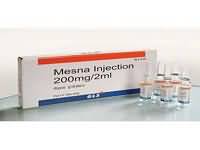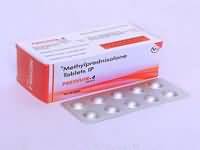Acrivastine

Acrivastine
CLINICAL USE
Antihistamine:
Symptomatic relief of allergy such as
hayfever, urticaria
DOSE IN NORMAL RENAL FUNCTION
8 mg 3 times a day
PHARMACOKINETICS
Molecular weight :
348.4
%Protein binding :
50
%Excreted unchanged in urine :
60
Volume of distribution (L/kg) :
0.6–0.7
half-life – normal/ESRD (hrs) :
1.5/–
DOSE IN RENAL IMPAIRMENT
GFR (mL/MIN)
20 to 50 : 8 mg twice a day
10 to 20 : 8 mg 1–2 times a day
<10 :
8 mg 1–2 times a day
DOSE IN PATIENTS UNDERGOING RENAL REPLACEMENT THERAPIES
CAPD :
Unknown dialysability. Dose as in
GFR <10 mL/min
HD :
Unknown dialysability. Dose as in
GFR <10 mL/min
HDF/high flux :
Unknown dialysability. Dose as in
GFR <10 mL/min
CAV/VVHD :
Unknown dialysability. Dose as in
GFR 10 to 20 mL/min
IMPORTANT DRUG INTERACTIONS
Potentially hazardous interactions with other drugs
Antidepressants: MAOIs and tricyclics
increase the antimuscarinic and sedative
effects
ADMINISTRATION
Reconstition
–
Route
Oral
Rate of Administration
–
Comments
–
OTHER INFORMATION
Manufacturers do not recommend use in
patients with significant renal impairment
See how to identify renal failure stages according to GFR calculation
See how to diagnose irreversible renal disease
Home









